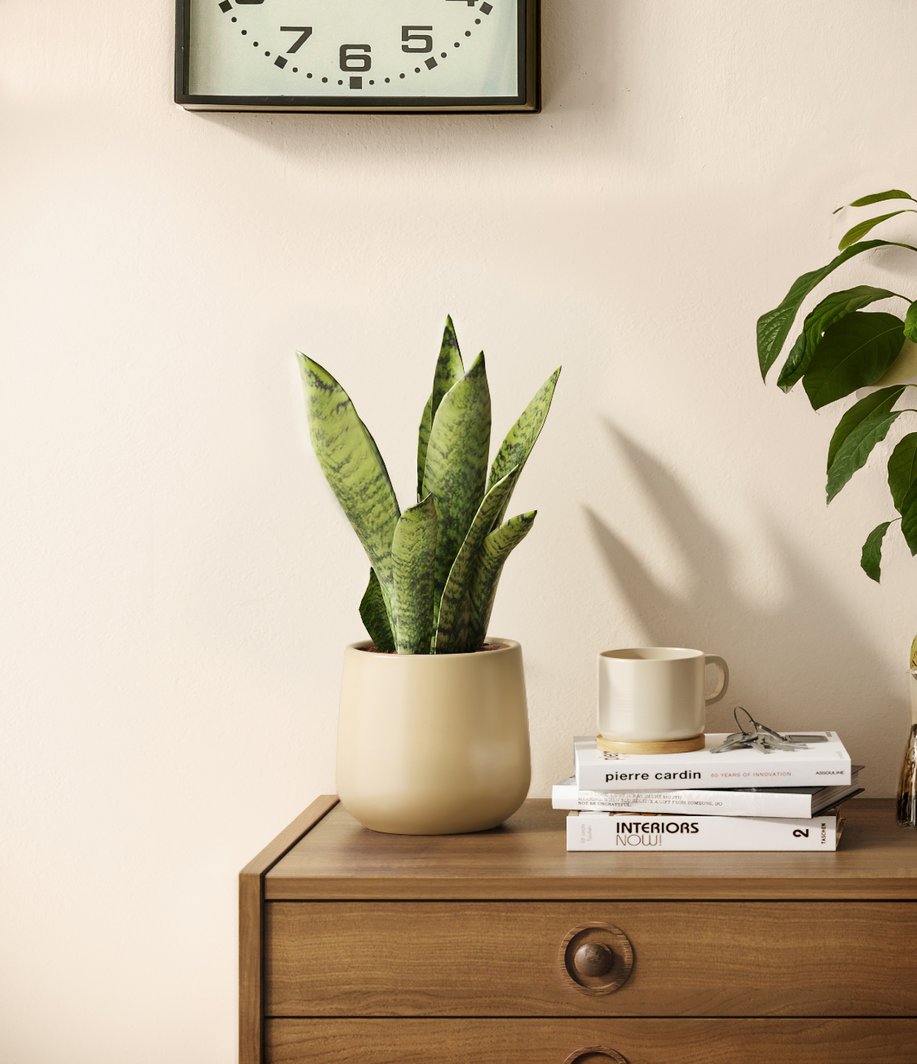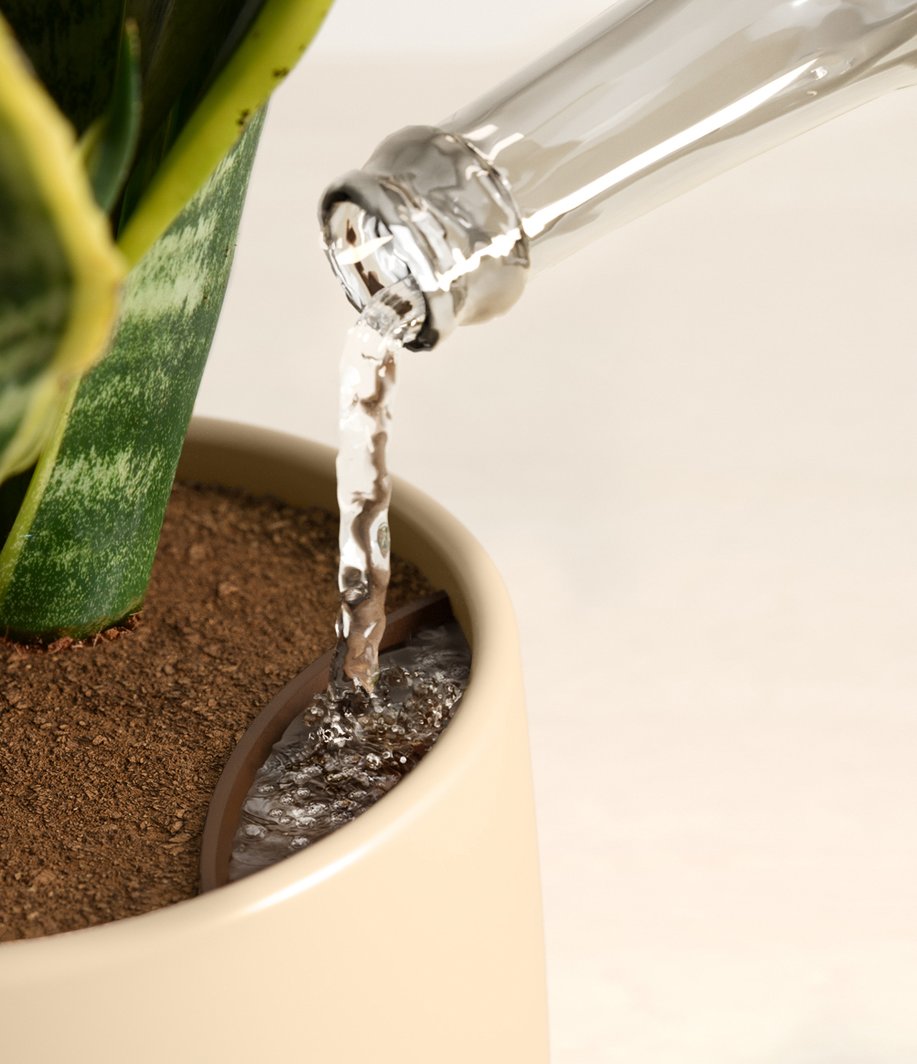Do Snake Plants Purify the Air?
Air quality is vital to your health. Plants help increase oxygen levels in the home and provide other mental health benefits, but some can do even more. Snake Plants are known as air purifiers, meaning they use their leaves to remove harmful chemicals from the air, then provide oxygen to purify the remaining air.
Air Purifying Benefits of Snake Plants
Snake Plants have many benefits, the most significant being an air purifier. Snake Plants purify air by removing common air pollutants from the home environment in as little as 48 hours. Healthier air quality means better sleep, improved breathing, and even a lower utility bill.
Reduces Allergens
Air-purifying snake plants reduce allergens in their environment by releasing oxygen and moisture into the air, lessening the impact of dander and dust. Snake plants clean air all day but release the most oxygen at night, making them a great addition to any bedroom.
Fights Toxins
A 1989 NASA study of plants' effects on air purity in the space station discovered that the Snake Plant or Sansevieria air purifier is among the top reducers of indoor air pollutants. The plant removes up to four toxins from the air, including benzene and formaldehyde. Other plants in the study were only successful at removing one or two toxins, so Snake Plants are not the most effective toxin-fighting plants you can own.
What Type of Snake Plant is the Best for Air Purification?
A few varieties of air-purifying snake plants are under the botanical family name Sansevieria. Snake Plants were among the primary plants listed in the 1989 NASA study with impressive results, making them among the best air purifiers for your home.
Golden Snake Plant
Golden Snake Plant, or Mother-in-law's tongue, is the most common variety of snake plants, native to Africa, Asia, and Madagascar. Like any other snake plant, it is forgiving and can adapt to various conditions.
This plant, also featured in the 1989 NASA study, was found to remove over 50% of air pollutants in 24 hours. The Golden Snake Plant was most effective in removing trichloroethylene, benzene, and formaldehyde.

Dwarf Snake Plant
A Dwarf Snake Plant is a sturdy succulent with sword-shaped variegated dark and light green leaves with bright-yellow edges. It's the perfect starter plant for new plant owners as it requires the same low-maintenance care as any other snake plant.
This variety was featured in the 1989 NASA study and was effective at removing a range of 9,727- 31,294 micrograms of toxins from a sealed experimental chamber in a single day.
Green Snake Plant
The Green Snake Plant is another common variety of Sansevieria that is a master air purifier. This plant differs mostly in aesthetic from the Golden Snake Plant, with its silver and sage stripes contrasting against the deep green of the leaves.
Like other snake plants, this variety removes allergens and toxins from the air. Dust and dander are not a problem for this plant. It produces most of the oxygen it releases into the atmosphere at night, providing better sleep for its owner.

Snake Plant Care Tips
Snake Plants do well as indoor plants. With proper care, they flourish and reward you with their long, strong, shiny variegated leaves. They are easy to grow and quite tolerant of a range of conditions.
Lighting for Snake Plants
Snake plants prefer a good amount of indirect light. They are quite adaptable, so they can also tolerate various lighting conditions, including low light to full sun.
Best Placement for Snake Plants
The ideal placement for a Snake Plant is a few feet from an east-or-west-facing window, where they can get around 5-6 hours of diffused sunlight a day. If you see direct sunlight falling on the plant, move it further away or use a sheer curtain to diffuse the light.
Watering Tips for Snake Plants
Snake Plants don't require a lot of water and can go 2-6 weeks between waterings, depending on the season. Like most houseplants, less watering is needed during the winter. Check the soil before watering and wait until it is completely dry before watering again.
You can mitigate any damage under or overwatering this plant by using a self-watering easyplant pot. All you have to do is fill the pot's reservoir once a month, and the built-in watering system does the rest.

Snake Plant Warning for Pet Owners
Snake Plants are a gorgeous, sculptural addition to any home and provide many benefits to the air quality, but they are toxic to pets. Ingesting any part of the Snake Plant can lead to mouth irritation and digestive issues.
Get an Air Purifying Snake Plant with easyplant Today!
Snake Plants are extremely easy to care for and serve as an interesting focal point in any room as long as they are kept from the reach of pets. They will grow to an impressive size if properly cared for and clean your air day and especially night.